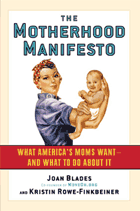Chapter Five: Healthcare for All Kids
Scroll down this page to read Chapter 5: Healthcare for All Kids online now.
To read more chapters, just click through the table of contents OR buy the book now.
Chapter Five:
H: Healthcare for All Kids
Standing at her kitchen island, Lori opened an envelope and immediately started crying tears of relief. Just moments before, on a cold and rainy fall day, she reached into her black mailbox and pulled out a bundle of mail. She then turned and went back up her gravel drive into her house to separate the junk mail from bills and personal correspondence. One of the envelopes was from Children’s Hospital.
Lori’s daughter Haley spent a good part of her childhood at Children’s Hospital. Right before Haley’s second birthday, after painting her face red with lipstick in the wonderfully random fashion that only a toddler can pull off, Haley came down with a terrible rash. At first, doctors thought the rash was an irritation from the lipstick. Then Haley became unable to ride her tricycle or climb up the steps to her favorite slide.
Of the over seventy-seven million children in the United States, 12 percent don’t have insurance coverage at all; 56 percent have health insurance through a parent’s work; and 4 percent are covered by independent health insurance packages.
Haley’s muscle weakness was increasing, and the rash wasn’t going away. The timing of the lipstick experiment and the rash turned out to be purely coincidental. Something far worse was going on. It was every family’s worst nightmare: Lori’s daughter Haley was gravely ill.
Haley was diagnosed with dermatomyositis, a complicated and sometimes deadly autoimmune disorder.
Lori is a full-time mother, and Haley’s father, Layne, is selfemployed. The family always made sure to purchase independent health insurance. But the packages available for self-employed people are “fairly expensive with lousy coverage,” as Lori notes. Still, the family assumed Haley’s care would be covered and were happy to see Haley responding well to treatment. Her disease even went into remission.
But when Haley was ten, she had a significant relapse of her disease. In short order, more than $120,000 of medical bills added up at Children’s Hospital. The health insurance company found several loopholes in the family’s insurance package and denied coverage for Haley’s treatment. The family was stuck with the entire bill.
Women are starting their own businesses at more than double the rate of the overall population, with an increasing number getting independent healthcare packages. As many mothers start their own businesses in order to have flexible work schedules, they are finding it difficult to get insurance because it is too expensive and/or inadequate.
In Haley’s case, although she had insurance through an independent healthcare package and the family thought they were fully covered, they soon found out otherwise. Her insurance turned out to be completely inadequate, which left her family vulnerable.
It was after this relapse that Lori opened the Children’s Hospital letter. “I probably read the letter three or four times because it was one of those moments that makes you catch your breath because you can’t believe what it says,” remembers Lori.
The letter read: Based on your financial situation, Children’s Hospital has agreed to pay, through the uncompensated care fund, all medical expenses your insurance doesn’t cover.
In this case, with a bill over $120,000, the insurance wasn’t covering anything. Had it not been for the extraordinary gift on the part of Children’s Hospital, Lori and Layne may have faced bankruptcy.
“I immediately called the number at the bottom of the letter and I was really crying at this point because I just couldn’t believe it. It’s like the biggest burden had been lifted—it’s so hard when your child is really sick, and then to have such enormous financial burdens is even worse. It was so amazing for it to just be lifted. It’s hard to even describe what that was like,” comments Lori.
Children’s Hospital in Seattle, Washington, has the largest all-volunteer fundraising organization of any hospital in North America; in 2004, volunteers contributed over 90,000 hours to fundraising efforts and the hospital used thirty-five million dollars in the uncompensated care fund to aid families whose income or insurance coverage is limited.
Each year nearly 60 percent of patients at Children’s Hospital— more than 57,000 children and teens—receive financial aid through Children’s financial assistance program for uncompensated care. Haley was one of those 57,000 patients, and she, in theory at least, had insurance. Universal financial assistance for healthcare isn’t available, most hospitals can’t fill in the gaps to the degree that Children’s Hospital in Seattle can, and as a result too many families are either forgoing needed care or ending up in bankruptcy.
Across our nation at least nine million children have no health insurance at all. And because so many families are underinsured, the statistics regarding children without adequate healthcare coverage are skewed; the real number is far greater than nine million. Only the very lucky few can win the healthcare lottery as Haley did.
